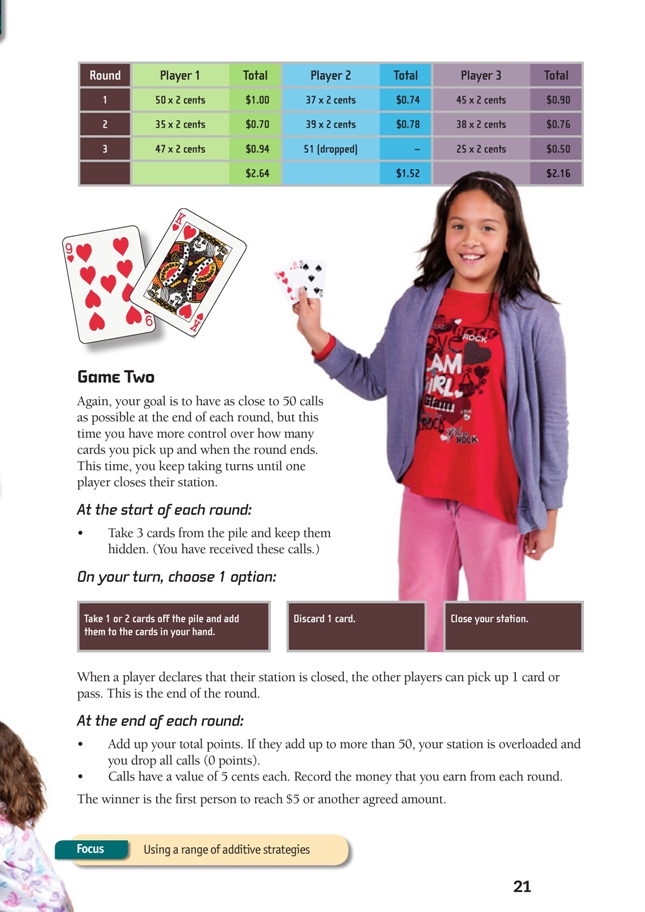This is a level 3 activity from the Figure It Out series.
A PDF of the student activity is included.
Click on the image to enlarge it. Click again to close. Download PDF (919 KB)
Most games involve a mixture of strategy and luck. Sometimes the need for a strategy only becomes apparent after starting the game. In these games, students collect cards and use them to make totals. The goal is to get the largest total possible without going over 50. In each round, students need to keep a running total in their mind or on paper in order to decide which card to discard or keep. This will help them to take sensible risks. Of course, there is not much they can do about luck!
classmates
a deck of cards (no jokers)
In these games, students use doubling and addition strategies to calculate earnings.
Game One requires students to double numbers. Ask the students to share their strategies for quick doubling. Some doubles, for example, 2 x 15 = 30, may be “known facts”. The students should keep a record of their calculations. They can use addition strategies to keep a running total so that they know when they have reached 300 cents. Game Two requires students to work with multiples of 5.
After the game, encourage the students to share any strategies they used. For example, looking for ways to “make tens” is one way to keep track of the running total during a round.
Playing a game is a good opportunity for students to develop the key competency participating and contributing. Some students may need guidelines or rules for co-operative play.
Technology-related student activities
- List safety systems in the community, for example, signs, railings, traffic lights, insulators.
- Research community systems, such as power, phone, or sewerage systems and how they deal with overload or failure.
- Research technologies such as cellphones, computers, or hot-air balloons to discover times or places when they don’t perform well.
- Choose one technological outcome and design safety features for it. See http://en.wikipedia.org/wiki/Automobile_safety
- Discuss personal items, such as toys, cameras, or shoes, that have not performed as well as expected.
Exploring the technology-related context
No technology is perfect. Faults, breakdowns, decay, and obsolescence are facts of life. High demands can overload systems, misuse can be dangerous, and waste products can pollute the environment. Some manufacturers may not want their products to be too durable or efficient because that would lower consumer demand. Today there are legal requirements for technologies to be as safe as possible, and systems are needed to ensure a failure will not endanger lives, for example, control systems in aircraft.
Answers to games one and two
Practical activities to develop number strategies

